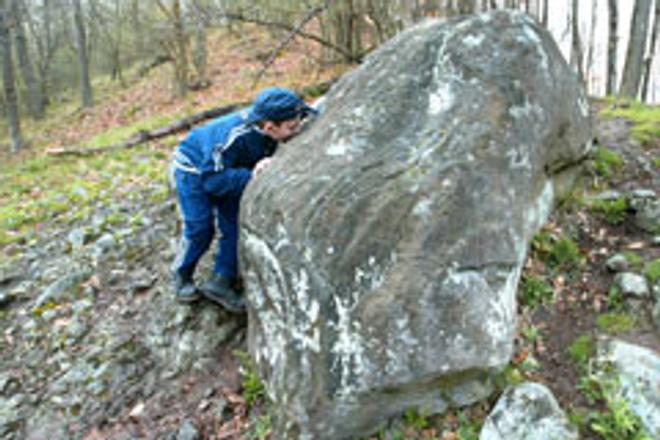VISITORS are being attracted to the mountains around the village of Sucháň, near Veľký Krtíš, by an unusual roaring stone. The loud sound which emanates from it resounds in the surrounding valleys. But only a few people are able to get the sound from the stone, the Sme daily reported.
"Every year, more and more people come here, wanting not just to see the stone, but also to hear it. In the village, there are only three or four people remaining who are able to do it," the village's mayor, Anna Triznová, said.
Tourists are usually guided by the vice-mayor, but Janko Heveš, 10, can also "play" the stone. He says that he managed to master the trick, which others have attempted to do unsuccessfully for many hours, immediately. He tried it for the first time three years ago.
"Nobody could understand it, but I just pressed my lips against the stone, and it immediately made the sound," Janko says, adding that he has no special technique, he just uses the right position of lips and a strong breath. He likes the idea of leading tourists to the stone one day, and knows its history.
"I already went to roar for some tourists, but I have to wait a few more years," he claims.
The history of the stone still prompts many questions: it is still not clear whether it is a freak of nature, or a unique stone instrument. The stone, made of andesite, has two openings, barely noticeable, through which one can make the sound. There are several signs carved into it, which can be explained in different ways. Digits resembling 1794 could mean the year, although there was no important event in Sucháň at that time. There is a colon over the nine, a symbol used by the Turks. And it is the Turks and their invasion of the south of the present Slovakia that is mentioned most often in connection with the mysterious rock.
However, the possibility that the number on the rock could have been the mark of some sort of signalling stone has also been considered. The echo of the "roar" resounds hundreds of metres away and the stone could perhaps have been part of some unusual system of communication.
For tourists who want to try the stone themselves, detailed instructions are displayed nearby. Trumpet players should have an advantage, as the principle for making the sound is similar. But even following the instructions does not guarantee that the stone will roar.



 Romancing the stone: strange noises fill the hills around Sucháň. (source: Sme -Ján Krošlák)
Romancing the stone: strange noises fill the hills around Sucháň. (source: Sme -Ján Krošlák)